
Street Market at Moreton-in-Marsh, Gloucestershire - Image by PicturesOfEngland.com member Jo Adams (view gallery)
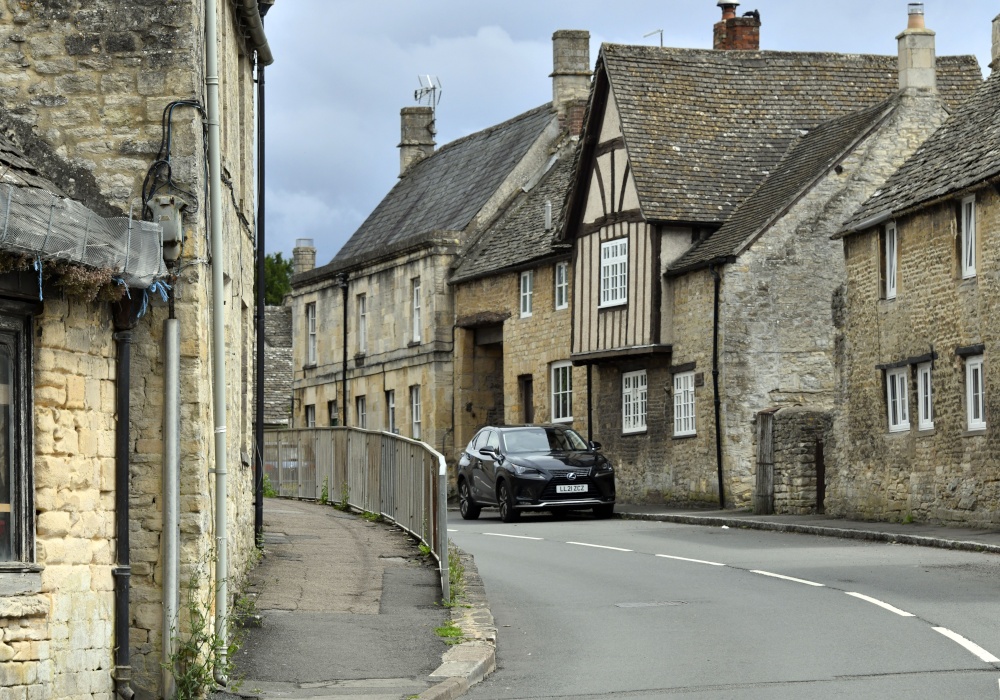
Northleach - Image by PicturesOfEngland.com member Paul V. A. Johnson (view gallery)
This elegant cotswold town is dominated by the great church of St.Peter and St.Paul, a building of the 15th-century that owes its splendour to the wealth garnered from the woollen industry in medieval times. Northleach, has roots that stretch back to the 8th-century, the village grew, and was granted a charter by Henry III in the 13th-century which gave the town a market and the right to hold an annual fair. The fair, known as the Charter Fair, is still held on the last weekend in June and attracts visitors from far and wide. The town quickly developed as a great market town and drew respect from all over Europe as a major centre for the woollen trade.
The town is utterly beguiling, it has many beautiful old timber frame cottages and some handsome houses of mellow cotswold stone. It has it's share of 'showpiece' properties, which include the stunning half-timbered Sherbourne Arms and the Red Lion pub, both are located in the market place.
John Forety, a wealthy wool merchant from the 15th-century is responsible for much of the beauty of the local church, his money paid for the building of the clerestory over the chancel arch and his brass is in the floor of the nave. The church is large and impressive, some say it is the most beautiful of all the 'woollen churches' and it is sometimes called 'The Cathedral of the Cotswolds' it has a lofty west tower and a fine south porch with pinnacles and niches filled with statues. The church is adorned with some glorious stained glass windows and included in it's treasures is a font from the 14th-century and a 'Goblet' pulpit. This church is fascinating, it is a constant source of amazement that is at times, simply overwhelming.
In the 18th-century, the town which is at a cross roads just off the Fosse Way was an important staging post for coach travel. Visitors stopped here to rest and change horses. These days, visitors still come to rest but it is the modern motor car that brings them, a vehicle that somehow looks out of tune with the mellow delights of Northleach - it's magnificent church and cherished medieval properties. A visit here will provide you with lasting memories of both
ID#495
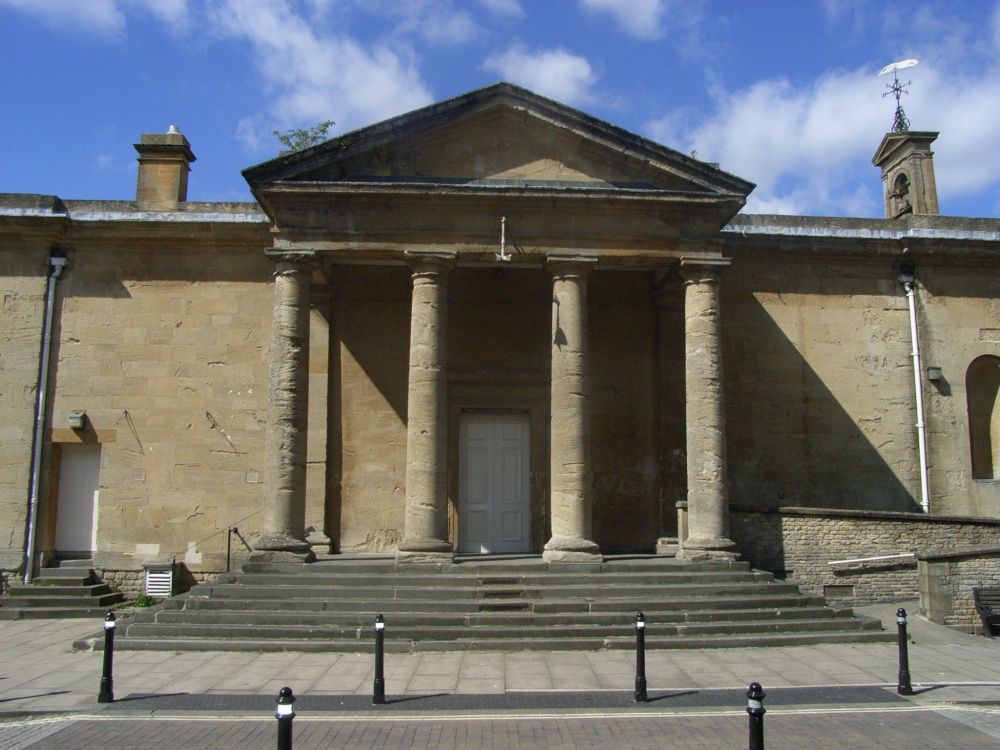
Chipping Norton Town Hall circa 1842 - Image by PicturesOfEngland.com member poe (view gallery)
Interestingly, this picturesque Cotswold town had one woollen mill that continued in production right up until 1980. The original Bliss Mill belonged to William Bliss, one of Chipping Norton's great benefactors who was largely responsible for establishing the town as a centre for fine cloth. The present mill, built in 1872 continued to produce Tweed until it closed in 1980. The building was sold and developed into apartments but fortunately the buildings massive stack was retained and is a dominant feature as you enter Chipping Norton from the north.
The town is 'hilly' and at 700ft is the highest town in Oxfordshire. Some of the roads are winding and a little 'higgledy-piggledy' but this all adds to the character and collective charm of the place. Medieval merchants flocked to the Cotswolds, many of them settling here and the town thrived from the riches gleaned from the fleece of the sheep who grazed in the lush countryside beyond. During this period of prosperity many beautiful buildings were built. The town shows fine Cotswold stone buildings from the 17th-century and as with many other 'wool' towns, Chipping Norton has a fine parish church. The church of St.Mary the Virgin is one of the largest parish churches in Oxfordshire. The south porch is hexagonal and stands two storeys high, there is a west tower and the 15th-century nave is clerestoried. The magnificent interior shows many treasures amongst which are fine brasses and monuments from the 16th-century, resplendent with effigies. Close to the church are almshouses from the 17th-century.
In the centre of the town there are several early glowing Cotswold stone properties. The Crown and Cushion Inn dates 1497 and was a former coaching inn. Sadly, The White Hart, a staging post and coaching inn from the 18th-century is currently being converted into luxury apartments. The old Guildhall has windows of Tudor origins. Some former private houses with historic associations have been converted into interesting antique shops and buyers from all over regularly converge here to rummage for antiquities.
Chipping Norton lies in the midst of beautiful cotswold countryside and is surrounded by other villages that radiate the glory of traditional honey-coloured cotswold stone Manor Houses and magnificent Churches. It is a town to be explored and enjoyed and will leave you with many happy memories.
Attractions nearby include; The Rollright Stones - mysterious relics of a Neolithic burial site, the beautiful old town of Stow-on-the-Wold and the delightful town of Bourton-on-the-Water.
ID#103
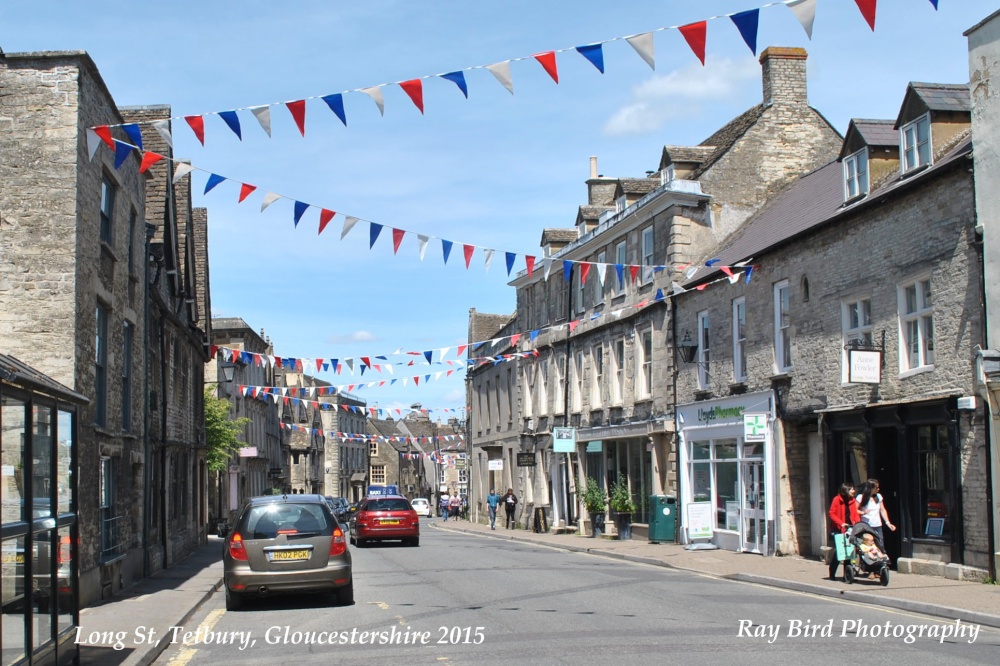
Long Street, Tetbury, Gloucestershire 2015 - Image by PicturesOfEngland.com member Ray Bird (view gallery)
A rather charming Cotswold town which has the good fortune to stand on the winding river Avon.
Tetbury has a lovely old church which is thought to have been rebuilt around 1780-1790, but both the tower and spire date from the 19th century. The interior of this splendid church has box pews, slender wooden pillars and a very fine gallery. It could certainly be said that this church is one of Englands' finest examples of the gothic revival style of architecture.
The country home of the Prince of Wales - Highgrove - is to the south west of the town but sadly, is not open to the public.
There is a wonderful ambience around Tetbury and the visitor can while away many an hour browsing in delightful shops or looking at historic places of interest such as the Elizabethan Market Hall to which one suspects the merchants of the day came to have their wool weighed befor selling it.
ID#215

Street Market at Moreton-in-Marsh, Gloucestershire - Image by PicturesOfEngland.com member Jo Adams (view gallery)
ID#22826
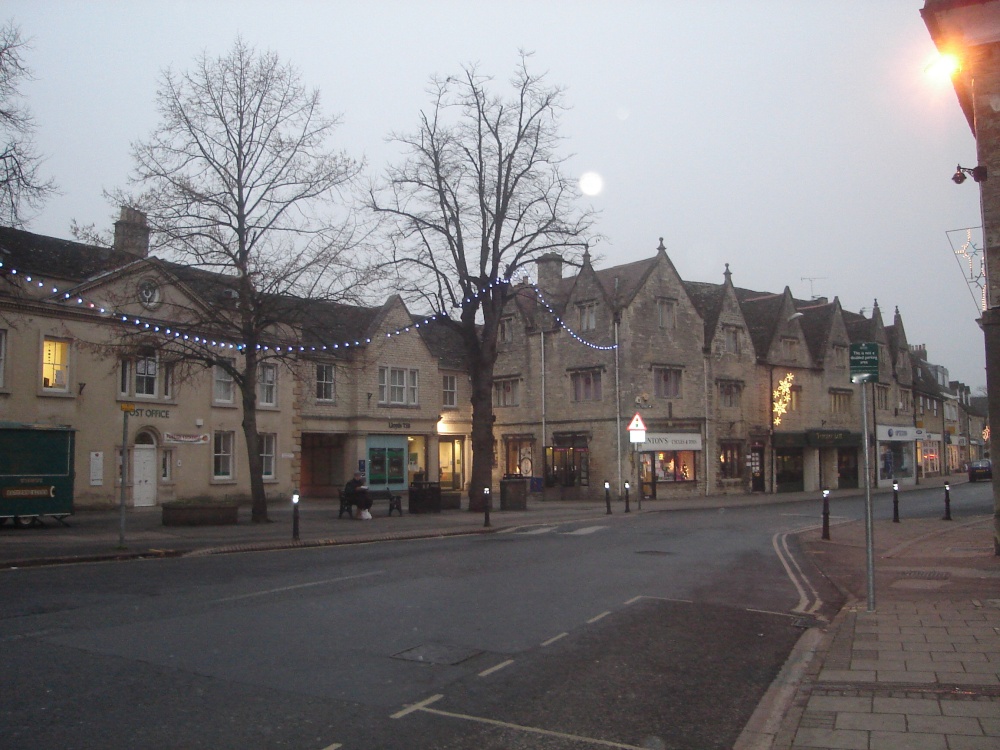
Witney High Street - Image by PicturesOfEngland.com member Lilian Constable (view gallery)
ID#77
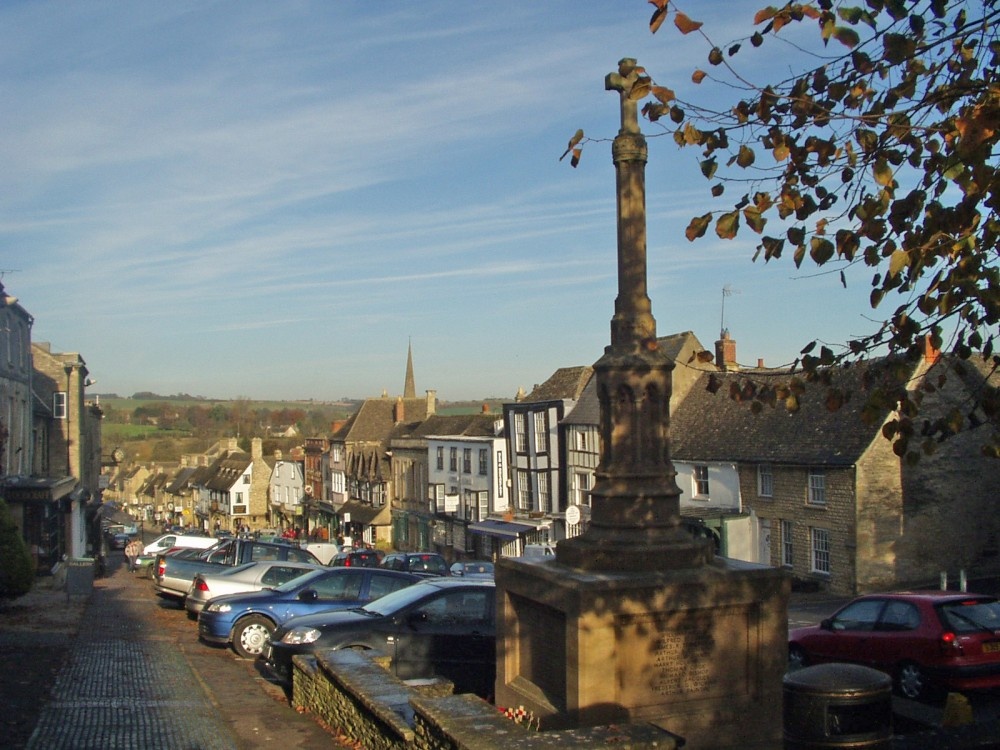
Burford, Oxfordshire - Image by PicturesOfEngland.com member Diana Arnold (view gallery)
Burford is an attractive Cotswold town in the Oxfordshire part of the Cotswolds, with a famous High Street that slopes down to a three-arched medieval bridge that carries traffic across the river Windrush.
Once a thriving wool town, Burford has some beautiful buildings including the grand Church of St John the Baptist, which is a Grade 1 listed building. This church was used as a prison in 1649 during the Civil War, and some of the prisoners graffiti carvings still survive today.
The Tolsey, along Burford's High Street is now the town museum but was once a place for trade, and dates back to the 16th century, being first documented in 1561.
ID#35
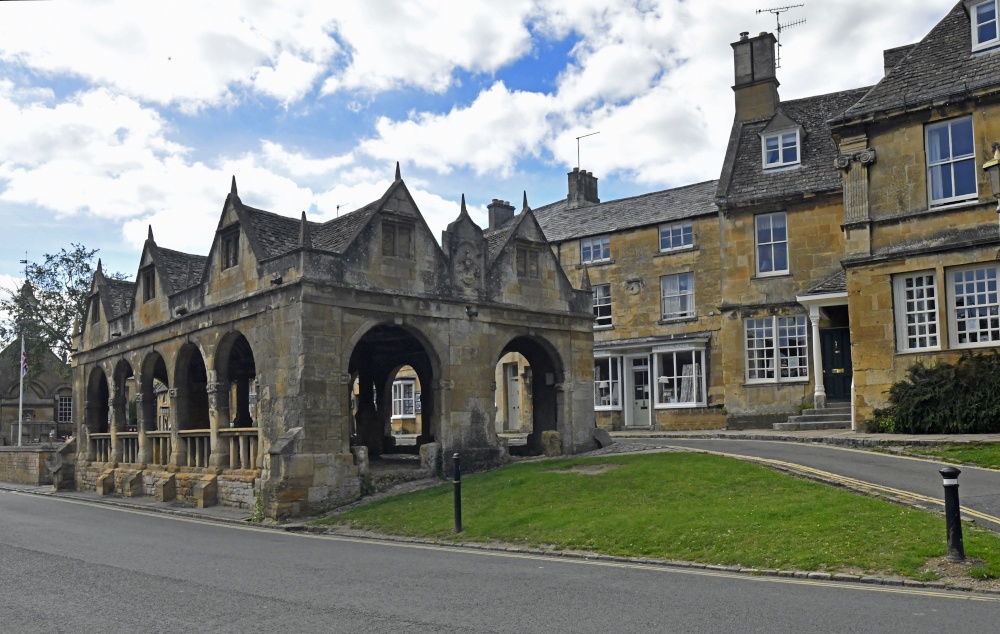
Chipping Campden - Image by PicturesOfEngland.com member Paul V. A. Johnson (view gallery)
Immediately appealing, this is certainly one of the most picturesque small towns in the northern reaches of the Cotswolds. The town bears all the hallmarks of the 14th and 15th-centuries when it was an important wool town and the wealthy merchants brought their fleeces to do trade at the exquisite 14th-century Woolstaplers Hall.
William Grevel was a wool merchant who gave generously to the town and the church. His house is one of Chipping Camden's special blessings, it has a beautiful two storey carved bay window dating from the 14th-century. The house can be found in the main street, opposite the Woolstaplers Hall. Take time to stroll a little further along the street and you will come to Chipping Campdens ancient Market Hall, built in the year 1627 where if you peer from beneath it's mellow stone arches you will glimpse a scene that has changed little since medieval times - such is the lure of this gracious little town.
Historically, Old Campden House, one of the grandest houses in the town was burned down at the time of the Civil War by the Royalists to prevent it falling to Cromwell. Not much remained and the stable block was converted into the Dower House after the Civil War came to an end.
The church of St. James is an imposing church. Its perpendicular tower rises majestically above the town to a height of 120ft. It is without doubt one of the finest 'wool churches' in the Cotswolds, it is mainly of the 15th-century but the chancel belongs to the 14th-century. The church houses many treasures which include a 15th-century brass lectern and several 16th-century monuments, one by Joshua Marshall. There are several brasses, one dedicated to William Grevel, describes him as 'The flower of the wool merchants of England' such was the appreciation of the townsfolk to this man for his extreme generosity. The church has a magical atmosphere and visitors will find it a constant source of fascination. It is well worth a visit.
Strewn along the pavement are perfect examples of gracious mellow stone properties all melting gently together and looking very much as if time had passed them by. Some, cover three storey's and are beautifully gabled with fine stone mullion windows, while others are two storey with enchanting bay windows and one or two have decorative canopied doorways. Some of these buildings are now shops and a wander inside reveals old beams, low ceilings and ever creaking old oak floors.
Chipping Campden has several old inns that have interesting histories and date from the 17th and 18th-centuries. A 17th-century tradition that is carried on in the town is Dovers Games - a re-creation of the classical Olympic Games, held annually in the week following Whit Monday.
This is a town from which you will take many pleasant memories, especially the vision of the ancient main street seen from the well worn stone flags of the beautifully arched Market House.
ID#314
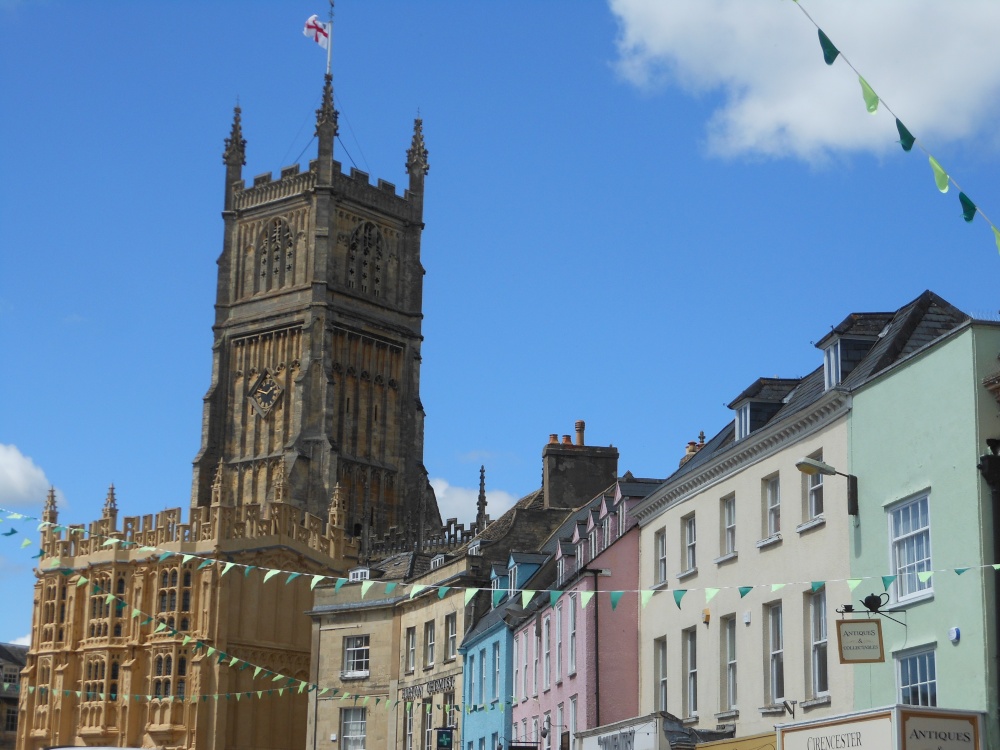
Church of St John the Baptist - Image by PicturesOfEngland.com member Lauren Daniells (view gallery)
Originally known in Roman times as Corinium Dobunorum, the town of Cirencester in those far off day's was the second largest town in England and the focus of several major highways. The town prospered in Roman times and much of this period in Cirencesters illustrious history is recreated in the Corinium Museum. When the Romans withdrew the town fell into decline.
At a later date wool became a major source of industry to the town bringing with it greater prosperity and it is the rich wool merchants we must thank for many of the fine buildings in, and around the town. Wool money paid for Cirencester's fine Church of St.John the Baptist. This church is one of the largest of it's kind in the country, from the top of the tower there are marvellous views across the town to Cirencester Park, seat of the Earl of Bathurst. In the wonderful grounds that surround this great house, is a folly which interestingly, was designed by Alexander Pope, the famous 18th-century poet.
Cirencester is a lively town to visit, there is much to see and do including the Roman Amphitheatre at nearby Chesterton.The lovely Gardens of Barnsley House at Barnsley, are also well worth visiting.
Cirencester hosts a regular weekly Antique market and also has it's own antique auction house. The town has a wide variety of pleasant shops, inns and public house's
ID#250
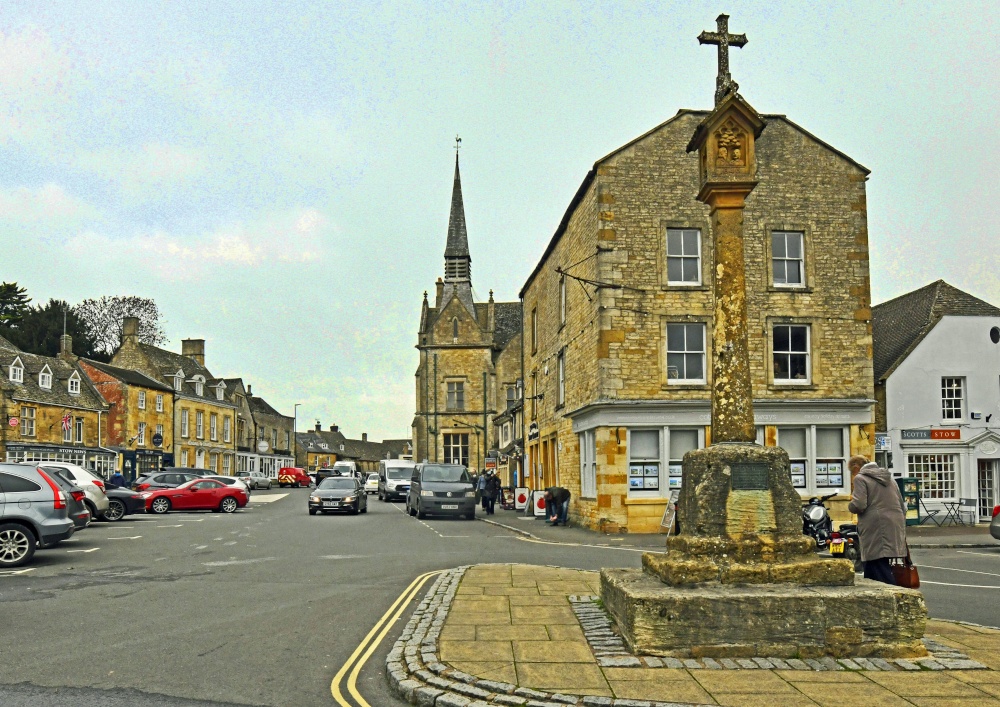
Stow on the Wold - Image by PicturesOfEngland.com member Paul V. A. Johnson (view gallery)
Welcome to "Stow on the Wold, where the wind blows cold" - an old saying because of Stow being situated at the high point of the Cotswolds, 800 feet above sea level. Stow is a beautiful town, and probably the busiest of all the cotswold towns. Infact if you judge it by the size of its market square, this shows that it has always been a busy part of the cotswolds. Many years ago when the cotswold wool industry was at it's height, Stow was famous for it's huge annual fairs where as many as 20,000 sheep were sold at a time at the busy market square. The square is now mainly used for parking, as Stow is a favourite destination for many a visitor to the Cotswolds.
With its beautiful streets and buildings, and interesting shops, Stow is a great place to base yourself if you plan on visiting the area and exploring the Cotswolds further, as it has eight roads intersecting and is often refered to as the very heart of the Cotswolds. With its wonderful church, rich history and beautiful town, Stow on the Wold is one of the perfect English towns that remains a must visit in most tourist guides of England.
ID#72
| Article Title | Author | Date |
| Stonehenge | David Coe | 23rd January 2024 |
| Derwent Dam: A Historic Icon in the Heart of Derbyshire | David Coe | 14th January 2024 |
| The Native Trees of England: A Botanical Tapestry | David Coe | 15th December 2023 |
| Stoke-on-Trent: The Potteries Hub | David Coe | 12th December 2023 |
| England's 'Heritage at Risk Register' 2023 | David Coe | 11th December 2023 |
| 10 of the prettiest villages in the Lake District, Cumbria | poe | 16th March 2023 |
| Where to see Daffodil Displays in the South West of England | poe | 3rd March 2023 |
| 10 Famous Landmarks in Dorset | poe | 1st March 2023 |
| List of popular Dorset market towns including market day | poe | 1st March 2023 |
| 10 Best Historic Attractions to visit in York, England | poe | 16th May 2022 |